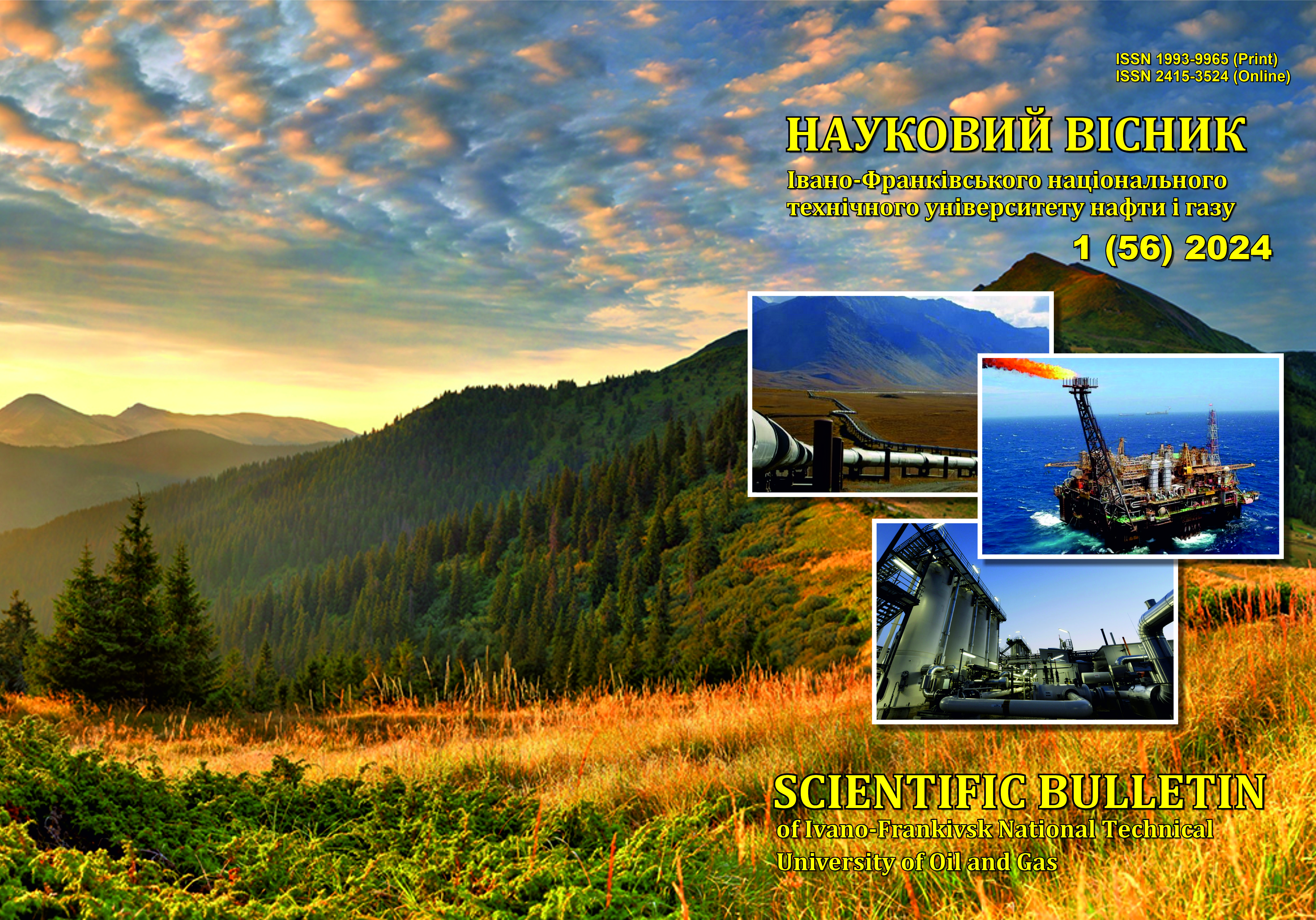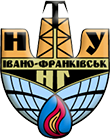ОГЛЯД ЗАСТОСУВАННЯ ШТУЧНОГО ІНТЕЛЕКТУ ТА МАШИННОГО НАВЧАННЯ У ПРИКЛАДНІЙ МЕХАНІЦІ
DOI:
https://doi.org/10.31471/1993-9965-2024-1(56)-79-91Ключові слова:
прикладна механіка, машинне навчання, штучний інтелект, механіка руйнування, матеріалознавство.Анотація
Розвиток інформаційних технологій, обчислювальних потужностей і поява нових методів опрацювання великих об’ємів даних призвели до виникнення нової парадигми – науки, що базується на великих даних. Основними підходами для роботи з великими даними є штучний інтелект і машинне навчання. Їх застосування дозволяє комп’ютерним програмам на основі вхідних даних робити висновки і передбачення, виокремлювати з них корисну інформацію. Застосування штучного інтелекту та машинного навчання в області прикладної механіки дозволяє значним чином розширити можливості для проведення досліджень та реалізації практичних задач. Метою роботи є огляд можливостей застосування методів ШІ та МН для вирішення проблем зі сфери прикладної механіки, а також викладення міркувань щодо реалізації процесу дослідження з використанням МН, важливості попередньої підготовки, обробки даних для успішного застосування методів у дослідженнях. У огляді наведено визначення для машинного навчання та штучного інтелекту, проаналізовано типову процедуру та основні принципи проведення дослідження з використанням МН, основні алгоритми та послідовність проведення дослідження з їх використанням, регресійні моделі, методи класифікації та кластеризації. Розглянуто вимоги дотримання передумов щодо об'єму, повноти та правдивості даних, що використовуються у дослідженні. Описано процеси збирання даних дослідження, етапи їх обробки та підготовки, наведено фактори, які впливають на вибір моделі. Розглянуто процеси тренування моделі та оцінки її поведінки і продуктивності. Проведено огляд досліджень зі сфери прикладної механіки, де застосовувалися методи штучного інтелекту або машинного навчання. Зокрема, проаналізовано застосування методів для виявлення дефектів виробництва, оцінювання якості виробництва, автоматизації процесів виробництва, моніторингу стану конструкцій, досліджень у сфері механіки руйнування та мате-ріалознавства. Зроблено висновки щодо причин поширення застосування методів МН та ШІ у дослідженнях в сфері прикладної механіки, наведено домінуючі підходи. Наголошено на важливості вирішення викликів, пов'язаних з обсягом та якістю даних дослідження, застосуванню технік попередньої обробки через їх вирішальну роль при реалізації МН.
Завантаження
Посилання
Hansen C., Johnson C., Pascucci V., Silva C. The Fourth Paradigm: Data-Intensive Scientific Discovery. 2009. С. 153–163. https://doi.org/10.1007/978-3-642-33299-9_1.
Veres O. M., Olyvko R. M. Klasyfikatsiia metodiv analizu Velykykh danykh, Visnyk Natsio-nalnoho Universytetu «Lvivska Politekhnika» «Informatsiini Systemy Ta Merezhi», 2018. Jun. Р. 84. URL: http://nbuv.gov.ua/UJRN/VNULPICM_2017_872_12 [In Ukrainian]
Wickramasinghe C. S., Amarasinghe K., Marino D. L., Rieger C., Manic M. Explainable Unsupervised Machine Learning for Cyber-Physical Systems. IEEE Access. 2021. Iss. 9. Р. 131824–131843. DOI: https://doi.org/10.1109/ACCESS.2021.3112397.
Sutton R. S., Barto A. G. Reinforcement learning: an introduction. Cambridge, Massa-?hu-setts: The MIT Press, 2018. 526 с. ISBN 978-0-262-03924-6. https://doi.org/10.1109/TNN.1998.712192.
James G., Witten D., Hastie T., Tibshirani R. An introduction to statistical learning: with applications in R. New York, NY: Springer, 2021. 607 с. ISBN 978-1-07-161417-4. https://doi.org/10.1007/978-1-0716-1418-1.
Guo K., Yang Z., Yu C.-H., Buehler M. J. Artificial intelligence and machine learning in design of mechanical materials. Materials Horizons. 2021. Vol. 8, Iss. 4. P. 1153–1172. https://doi.org/10.1039/D0MH01451F.
Hushchyn I. V., Sych D. O. Analiz vplyvu poperednoi obrobky tekstu na rezultaty tekstovoi klasyfikatsii. Molodyi Vchenyi, No 10(1), P. 264–266, 2018. URL: https://www.molodyivchenyi.ua/index.php/journal/article/view/3755. [In Ukrainian]
Artkin F. Applications of Artificial Intelligence in Mechanical Engineering. European Journal of Science and Technology. 2022. https://doi.org/10.31590/ejosat.1224045.
Wiangkham A., Aengchuan P., Kasemsri R., Pichitkul A., Tantrairatn S., Ariyarit A. Improvement of Mixed-Mode I/II Fracture Toughness Modeling Prediction Performance by Using a Multi-Fidelity Surrogate Model Based on Fracture Criteria. Materials. 2022. Vol. 15, Iss. 23. P. 8580. https://doi.org/10.3390/ma15238580.
Alemu Y., Lahmer T., Walther C. Damage Detection with Data-Driven Machine Learning Models on an Experimental Structure. Eng. 2024. Vol. 5. P. 629–656. https://doi.org/10.3390/eng5020036.
Konovalenko I., Maruschak P., Brevus V., Prentkovskis O. Recognition of Scratches and Abrasions on Metal Surfaces Using a Classifier Based on a Convolutional Neural Network. Metals. 2021. Vol. 11, Iss. 4. P. 549. https://doi.org/10.3390/met11040549.
Davari N., Veloso B., Costa G. D. A., Pereira P. M., Ribeiro R. P., Gama J. A Survey on Data-Driven Predictive Maintenance for the Railway Industry. Sensors. 2021. Vol. 21, Iss. 17. P. 5739. https://doi.org/10.3390/s21175739.
Peres R. S., Dionisio Rocha A., Leitao P., Barata J. IDARTS – Towards intelligent data analysis and real-time supervision for industry 4.0. Computers in Industry. 2018. Vol. 101. P. 138–146. https://doi.org/10.1016/j.compind.2018.07.004.
Raja H. A., Kudelina K., Asad B., Vaimann T., Kallaste A., Rassõlkin A., Khang H. V. Signal Spectrum-Based Machine Learning Approach for Fault Prediction and Maintenance of Electrical Machines. Energies. 2022. Vol. 15, Iss. 24. P. 9507. https://doi.org/10.3390/en15249507.
Khorsheed R. M., Beyca O. F. An integrated machine learning: Utility theory framework for real-time predictive maintenance in pumping systems. Proceedings of the Institution of Mechanical Engineers, Part B. Journal of Enginee-ring Manufacture. 2021. Vol. 235, Iss. 5. P. 887–901. https://doi.org/10.1177/0954405420970517.
Maniraj J., Arockiasamy F. S., Kumar C. R., Kumar D. A., Jenish I., Suyambulingam I., Rangappa S. M., Siengchin S. Machine Learning Techniques for the Design and Optimization of Polymer Composites: A Review. E3S Web of Conferences. 2023. Vol. 428. P. 02013. https://doi.org/10.1051/e3sconf/202342802013.
Soni M., Misra S. Machine-Learning-Assisted Design of Multiband Terahertz Metamaterial Absorber. ACS Applied Optical Materials. 2023. Vol. 1, Iss. 10. P. 1679–1687. https://doi.org/10.1021/acsaom.3c00246.
Zhang A., Liu Y., Yang J., Li Z., Zhang C., Li Y. Shenyang Blower Works Group Machine Learning Based Design Optimization of Centri-fugal Impellers. 2022. https://doi.org/10.33737/gpps21-tc-235.
Dworschak F., Dietze S., Wittmann M., Schleich B., Wartzack S. Reinforcement Learning for Engineering Design Automation. Advanced Engineering Informatics. 2022. Vol. 52. P. 101612. https://doi.org/10.1016/j.aei.2022.101612.
Koester M. Making Industrial Analytics work for Factory Automation Applications. Machine Learning for Cyber Physical Systems. Ред. Beyerer J., Kühnert C., Niggemann O. Berlin, Heidelberg: Springer Berlin Heidelberg, 2019.
P. 116–122. https://doi.org/10.1007/978-3-662-58485-9_13.
Ziatdinov M., Dyck O., Maksov A., Li X., Sang X., Xiao K., Unocic R. R., Vasudevan R., Jesse S., Kalinin S. V. Deep Learning of Atomically Resolved Scanning Transmission Electron Microscopy Images: Chemical Identifi-cation and Tracking Local Transformations. ACS Nano. 2017. Vol. 11, Iss. 12. P. 12742–12752. https://doi.org/10.1021/acsnano.7b07504.
Yasnii О. P., Pastukh O. А., Pyndus Yu. І., Lutsyk N. S., Didych I. S. Prediction of the Diagrams of Fatigue Fracture of D16T Aluminum Alloy by the Methods of Machine Learning. Materials Science. 2018. Vol. 54, Iss. 3. P. 333–338. https://doi.org/10.1007/s11003-018-0189-9.
Yasniy O., Didych I., Lapusta Y. Prediction of fatigue crack growth diagrams by methods of machine learning under constant amplitude loading. Acta Metallurgica Slovaca. 2020. Vol. 26, Iss. 1. P. 31–33. https://doi.org/10.36547/ams.26.1.346.
Lyu Y., Yang Z., Liang H., Zhang B., Ge M., Liu R., Zhang Z., Yang H. Artificial intelligence‐assisted fatigue fracture recognition based on morphing and fully convolutional networks. Fatigue & Fracture of Engineering Materials & Structures. 2022. Vol. 45, Iss. 6. P. 1690–1702. https://doi.org/10.1111/ffe.13693.
Schleder G. R., Padilha A. C. M., Acosta C. M., Costa M., Fazzio A. From DFT to machine learning: recent approaches to materials science – a review. Journal of Physics: Materials. 2019. Vol. 2, Iss. 3. P. 032001. https://doi.org/10.1088/2515-7639/ab084b.
Merchant A., Batzner S., Schoenholz S. S., Aykol M., Cheon G., Cubuk E. D. Scaling deep learning for materials discovery. Nature. 2023. Vol. 624, Iss. 7990. P. 80–85. https://doi.org/10.1038/s41586-023-06735-9.
Liu Y., Zhao T., Ju W., Shi S. Materials discovery and design using machine learning. Journal of Materiomics. 2017. Vol. 3, Iss. 3. P. 159–177. https://doi.org/10.1016/j.jmat.2017.08.002.
Isayev O., Oses C., Toher C., Gossett E., Curtarolo S., Tropsha A. Universal fragment descriptors for predicting properties of inorganic crystals. Nature Communications. 2017. Vol. 8, Iss. 1. P. 15679. https://doi.org/10.1038/ncomms15679.
Guo Z., Malinov S., Sha W. Modelling beta transus temperature of titanium alloys using artificial neural network. Computational Materials Science. 2005. Vol. 32, Iss. 1. P. 1–12. https://doi.org/10.1016/j.commatsci.2004.05.004.
Altun F., Kişi Ö., Aydin K. Predicting the compressive strength of steel fiber added lightweight concrete using neural network. Computational Materials Science. 2008. Vol. 42, Iss. 2. P. 259–265. https://doi.org/10.1016/j.commatsci.2007.07.011.
Topçu İ. B., Sarıdemir M. Prediction of properties of waste AAC aggregate concrete using artificial neural network. Computational Materials Science. 2007. Vol. 41, Iss. 1. P. 117–125. https://doi.org/10.1016/j.commatsci.2007.03.010.
Salahinejad M., Le T. C., Winkler D. A. Capturing the Crystal: Prediction of Enthalpy of Sublimation, Crystal Lattice Energy, and Melting Points of Organic Compounds. Journal of Chemical Information and Modeling. 2013. Vol. 53, Iss. 1. P. 223–229. https://doi.org/10.1021/ci3005012.
Häse F., Valleau S., Pyzer-Knapp E., Aspuru-Guzik A. Machine learning exciton dynamics. Chemical Science. 2016. Vol. 7, Iss. 8. P. 5139–5147. https://doi.org/10.1039/C5SC04786B.
Hansen K., Montavon G., Biegler F., Fazli S., Rupp M., Scheffler M., Von Lilienfeld O. A., Tkatchenko A., Müller K.-R. Assessment and Validation of Machine Learning Methods for Predicting Molecular Atomization Energies. Journal of Chemical Theory and Computation. 2013. Vol. 9, Iss. 8. P. 3404–3419. https://doi.org/10.1021/ct400195d.
Ward L., Agrawal A., Choudhary A., Wolverton C. A general-purpose machine learning framework for predicting properties of inorganic materials. npj Computational Materials. 2016. Vol. 2, Iss. 1. P. 16028. https://doi.org/10.1038/
npjcompumats.2016.28.
Lo K., Wang L. L., Neumann M., Kinney R., Weld D. S. S2ORC: The Semantic Scholar Open Research Corpus. arXiv, 2019. https://doi.org/10.48550/ARXIV.1911.02782.
ChemDataExtractor. URL: http://chemdataextractor.org/.
Deep Search, IBM Research. URL: https://research.ibm.com/projects/deep-search.
Liu Y., Yang Z., Yu Z., Liu Z., Liu D., Lin H., Li M., Ma S., Avdeev M., Shi S. Generative artificial intelligence and its applica-tions in materials science: Current situation and future perspectives. Journal of Materiomics. 2023. Vol. 9, Iss. 4. P. 798–816. https://doi.org/10.1016/j.jmat.2023.05.001.
Chen L., Zhang W., Nie Z., Li S., Pan F. Generative models for inverse design of inorganic solid materials. Journal of Materials Informatics. 2021. https://doi.org/10.20517/jmi.2021.07.
##submission.downloads##
Опубліковано
Як цитувати
Номер
Розділ
Ліцензія
Авторські права....


1.png)

















